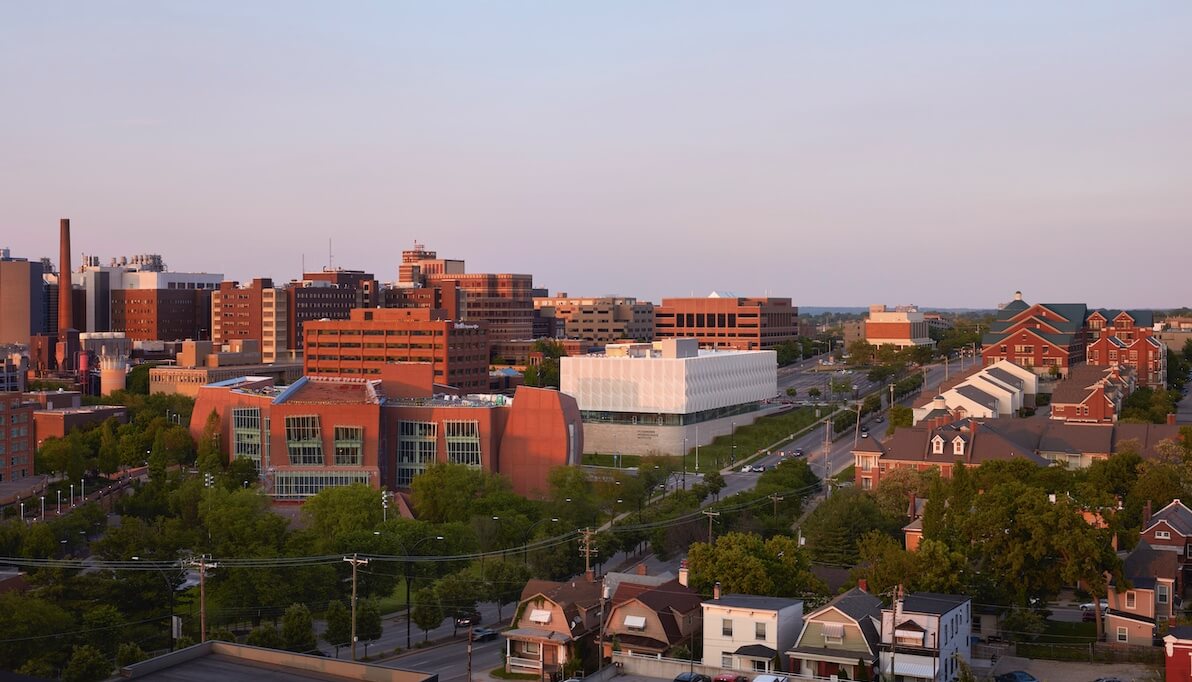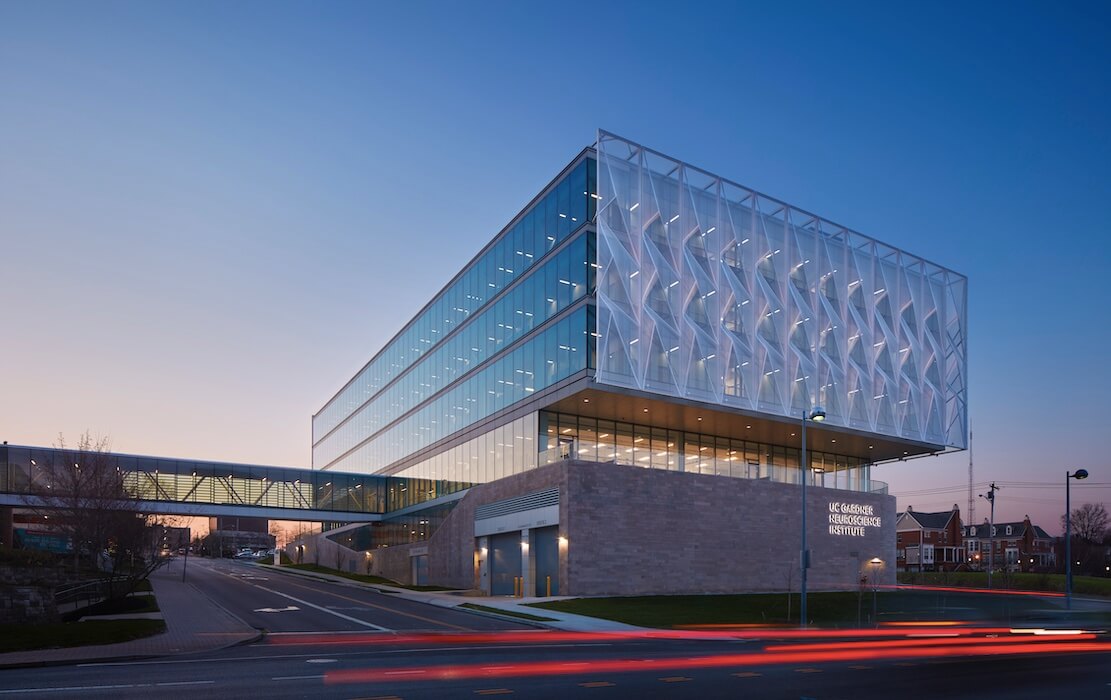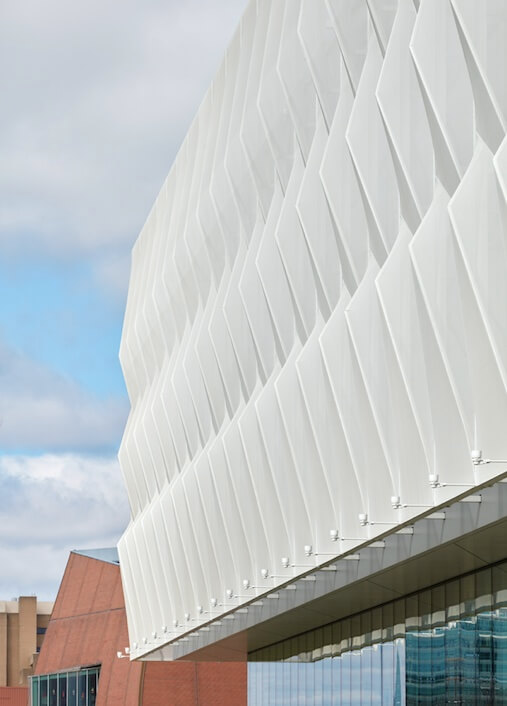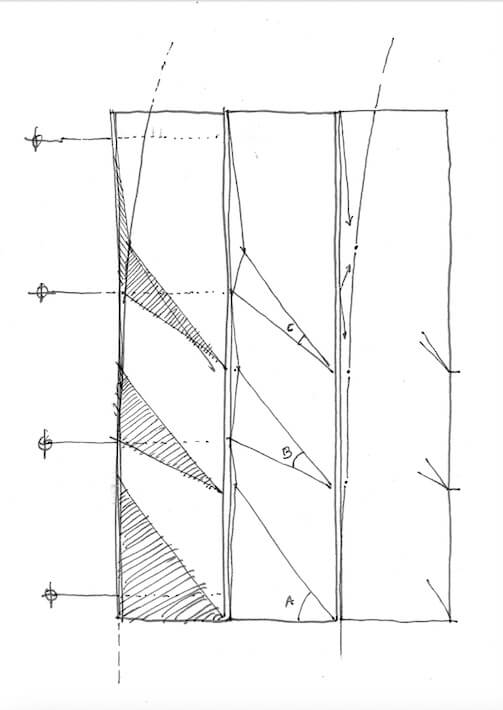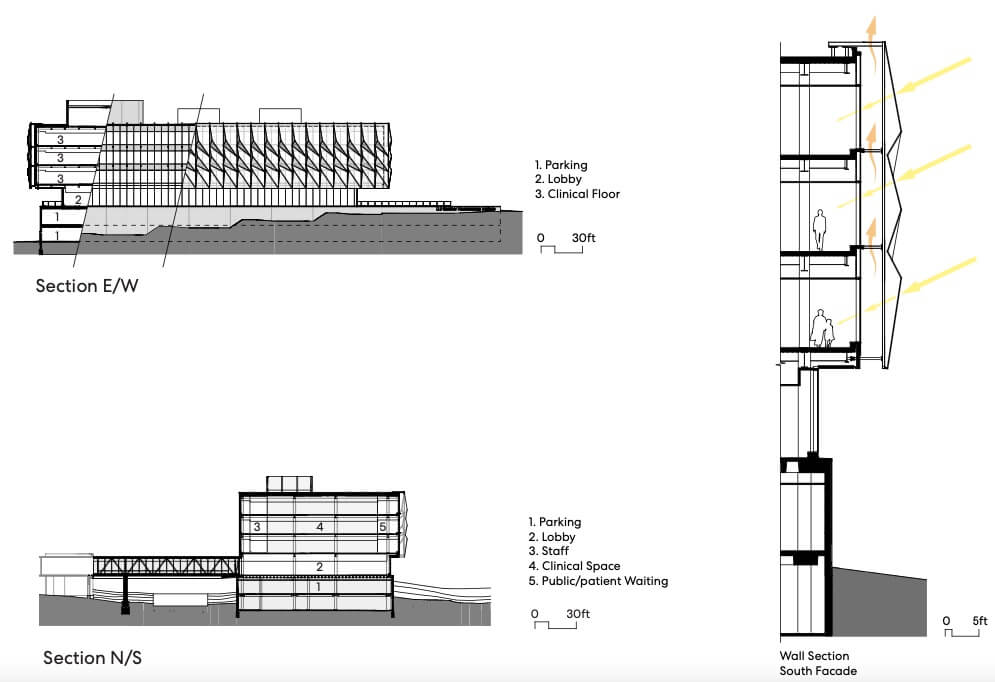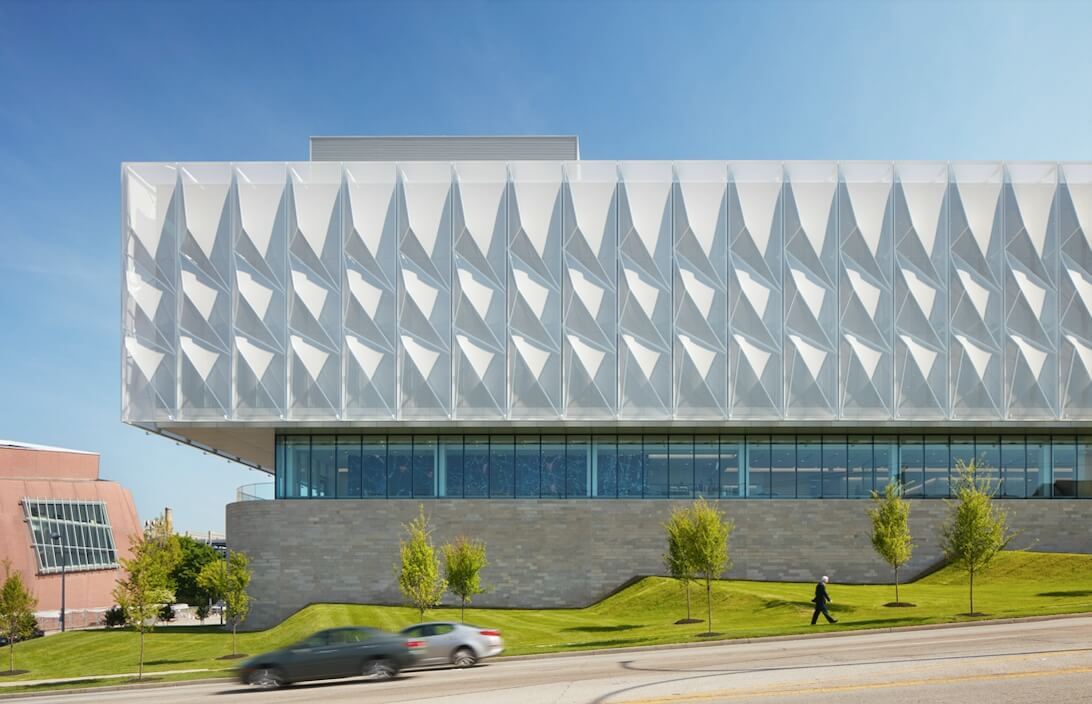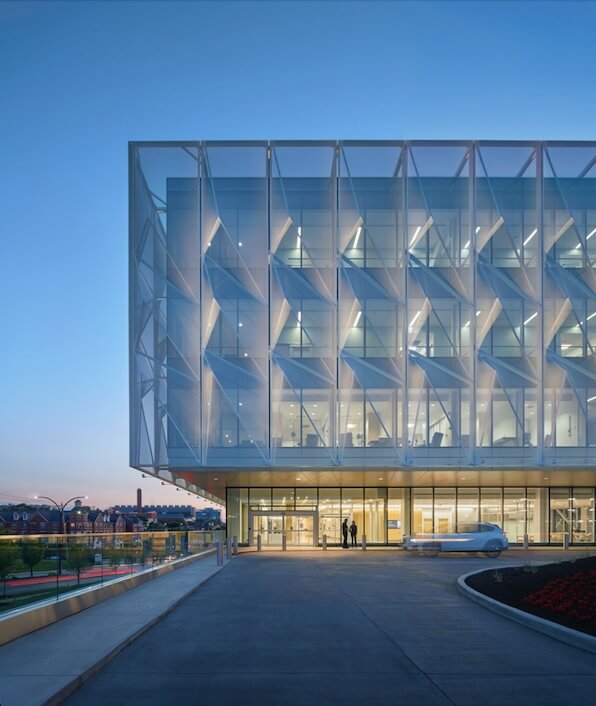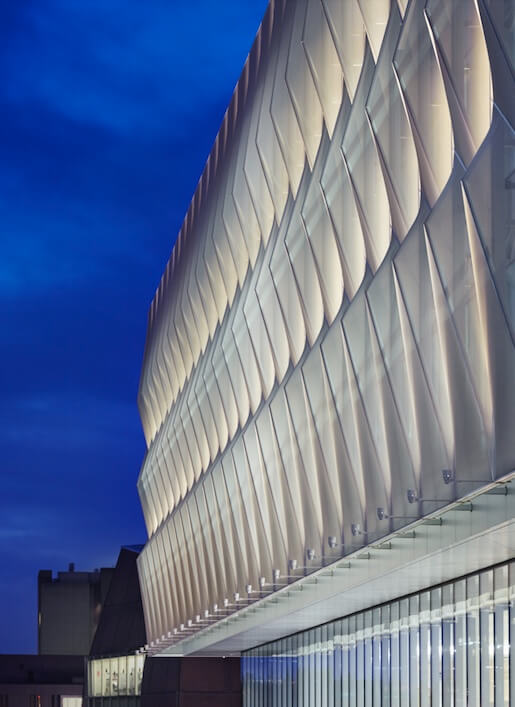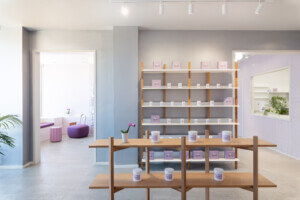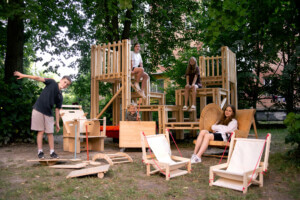In an age where healthcare design is rapidly embracing new technologies and research to maximize patient care and comfort, the University of Cincinnati’s Gardner Neuroscience Institute stands out with its attention to detail for the specialized needs of the patients and healthcare workers who use the space. The outpatient facility, chosen as AN’s 2019 Best of Healthcare Design winner, was designed to consolidate 15 specialty centers for treating patients suffering from neurological diseases while accommodating 125 faculty members in one gateway space for the medical campus. Perkins&Will, based in Chicago only a short drive away, was able to translate these needs into a design that considered the patient from the inside out.
The building is distinct among its brick neighbors due to its almost sculptural facade; waves of white mesh encapsulate the sun-facing sides of the building with a glass curtain wall facing inward toward the UC Health campus. The institute creates a new visual identity, separate from the imprint that Frank Gehry’s voluminous brick Vontz Center for Molecular Studies, frequently in need of repair, leaves next door.
- Facade
Manufacturer
Mehler Texnologies - Architect
Perkins & Will - Structural Engineer
Shell + Meyer Associates - Facade Contractor
Messer Construction - Facade Engineer & Installer
Structurflex - Location
Cincinnati, Ohio - Date of
Completion
2019 - System
fabric sculptural mesh with glass curtain wall - Products
Glazing and glass by Schueco
Aluminum clips by Facid North America
Mesh by Mehler Texnologies
The four-story steel-and-glass structure rose on the sloped corner of the medical campus, along a major six-lane street, ringing in at nearly 200,000 square feet. The research team at Perkins & Will’s Human Experience Lab spoke with many patients, family members, and faculty to help the design team create more than an architectural statement, but also an envelope that interacted with the interior as informed by patient experience. “It opened up the conversation to much broader, deeper aspects. We heard about everything from how dramatically difficult it is for someone with a neurological disorder to find a parking spot to getting into the building in a timely manner and their need to access a toilet quickly, all of which can make the journey to the hospital a horrific experience,” said Eve Edelstein, director of the Human Experience Lab.
The architects worked with Structurflex to land on a structural facade with tensile fabric mesh that emphasized panoramic views and daylight while still diffusing sun for neurological patients who might be sensitive to light. The resultant mesh facade, manufactured by Mehler Texnologies out of Germany, is made of over 30,000 square feet of coated PES (polyvinyl-coated polyester). It diffuses sunlight directing it at an angle through the glass curtain wall, minimizing glare while reducing the solar load by over 56 percent. Additionally, incorporating the outer screen into the facade design eliminated the need for costly internal shades.
“Although derived from a desire to protect sensitive patients and improve energy performance, the mesh facade has become a symbol for UC health. The advanced facade speaks to the technical excellence of UC Health’s program while the soft organic geometries reflect the humane personal care UC Health gives to its patients,” said Jerry Johnson, design principal at Perkins & Will.
The sea of panels cover the top three stories and wrap around the cantilever on the south side of the building and are held by a continuous aluminum clip system developed by Facid North America. The tensioned clips system is attached to a unitized steel subframe that is supported by the building’s steel superstructure. The steel subframe is primarily hung from the top of the roof and laterally restrained at the bottom. A standard panel module is 10-feet-wide-by-47-feet-tall. This scale not only effectively places the building in its urban context, but also is showcased at the human scale when those circulating through the glass hallways can connect to the details of the textured facade on any level.






